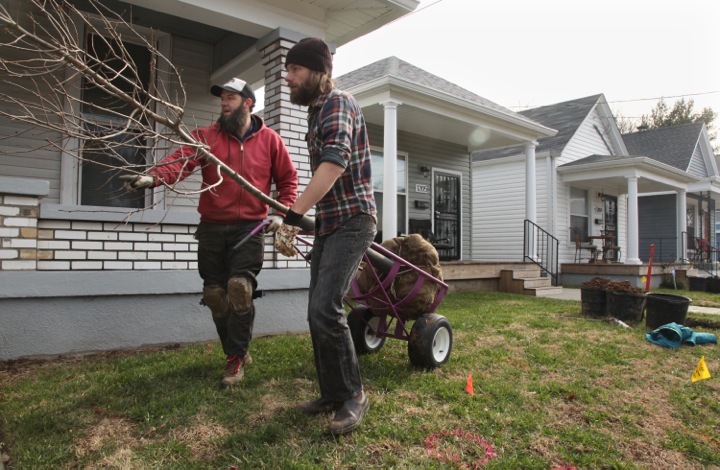Community Program Aims to Stem Tide of Declining Canopy in Louisville
-

- Credit: Mike Hayman
Louisville is losing its urban tree canopy at an alarming rate. However, a new program is working to reverse that trend with an innovative approach to encouraging residents to plant trees.
The 2015 Louisville Urban Tree Canopy Assessment showed that the city lost 820 acres of canopy or 54,000 trees per year between 2004 and 2012. According to Cindi Sullivan, the executive director of the nonprofit organization TreesLouisville, the primary culprits were identified as emerald ash borer and other insects and diseases, urban development, a lack of interest in tree planting by private owners, and cuts to the Louisville metro government budget.
According to Sullivan, the study showed Louisville’s tree canopy is at only 37 percent coverage, while 45 percent or more is recommended for a healthy community.
“As metro budgets are cut, unfortunately trees are often looked at as a luxury,” says Sullivan, “when in fact they’re an integral, valuable part of our infrastructure.”
TreesLouisville formed in 2015 as a direct result of the urban tree canopy assessment, and with the sole mission of increasing Louisville’s urban forest.
-

- Credit: Mike Hayman
In late 2018, TreesLouisville received a $126,000 U.S. Forest Service Landscape Scale Restoration grant through the Kentucky Division of Forestry. The grant provides two years of funding to implement the Arbor Day Foundation’s Community Canopy Program in areas of Louisville that need trees.
Rob Momsa, the program director for TreesLouisville, said that through the program 870 trees were given to Louisville residents in the spring of 2019, and they are on track to give away another 1,500 this fall (and 3,500 overall by the end of the project).
Louisville residents can go online and access a software package that allows them to input their address. It pulls up a satellite image of their home. They can then choose a tree from a dozen or so options. They can try out different spots on their property, and the program tells them the best place to plant the tree to save the most energy. After they’ve selected the best spot for their tree, participants click a button, submit a request, and a tree in a one gallon container is delivered to their door, or they can come and pick up a larger trees in three to five gallon containers at a pickup site.
-

- Credit: Mike Hayman
“A big part of the success of the program is that it really communicates the value of trees in literal dollars and cents—specifically in terms of how much money a tree will help you save on your energy bill every year,” said Charlotte Jones, the program manager for TreesLouisville. “That is something that makes it a lot more relatable and understandable for a lot of people.”
Equity in the distribution of the tree canopy is a central focus of the program. The program organizers used the detailed descriptions of canopy percentage by neighborhoods to target low coverage areas for the program.
“We focused on west, southwest, and south-central Louisville, and not coincidentally those are some of the lower socioeconomic areas of town,” said Sullivan.
Sullivan explained that the assessment showed that low socioeconomic neighborhoods averaged 22 percent canopy, while wealthier areas averaged 49 percent.
-

- Credit: Mike Hayman
“We are working diligently to make up for those decades of disinvestment in those areas [low socioeconomic neighborhoods], so equity is a huge focus of what we do,” said Sullivan.
The Community Canopy Program uses a weighted system for distribution of trees. They make 70 percent of the trees available to the low canopy neighborhoods, and 30 percent to the rest of the metro area.
Besides making the trees available to low canopy neighborhoods, program staff have also been canvassing and going door to door to explain the benefits of the program.
“When people understand that a robust tree canopy has everything to do with the health of the community and social cohesion and all of those things that we all know, and we get that message across, it creates that light bulb moment where people go, ‘oh yeah, this is what I should be doing,’” said Sullivan.
Author(s)
Josh McDaniel
Sep 06, 2019



